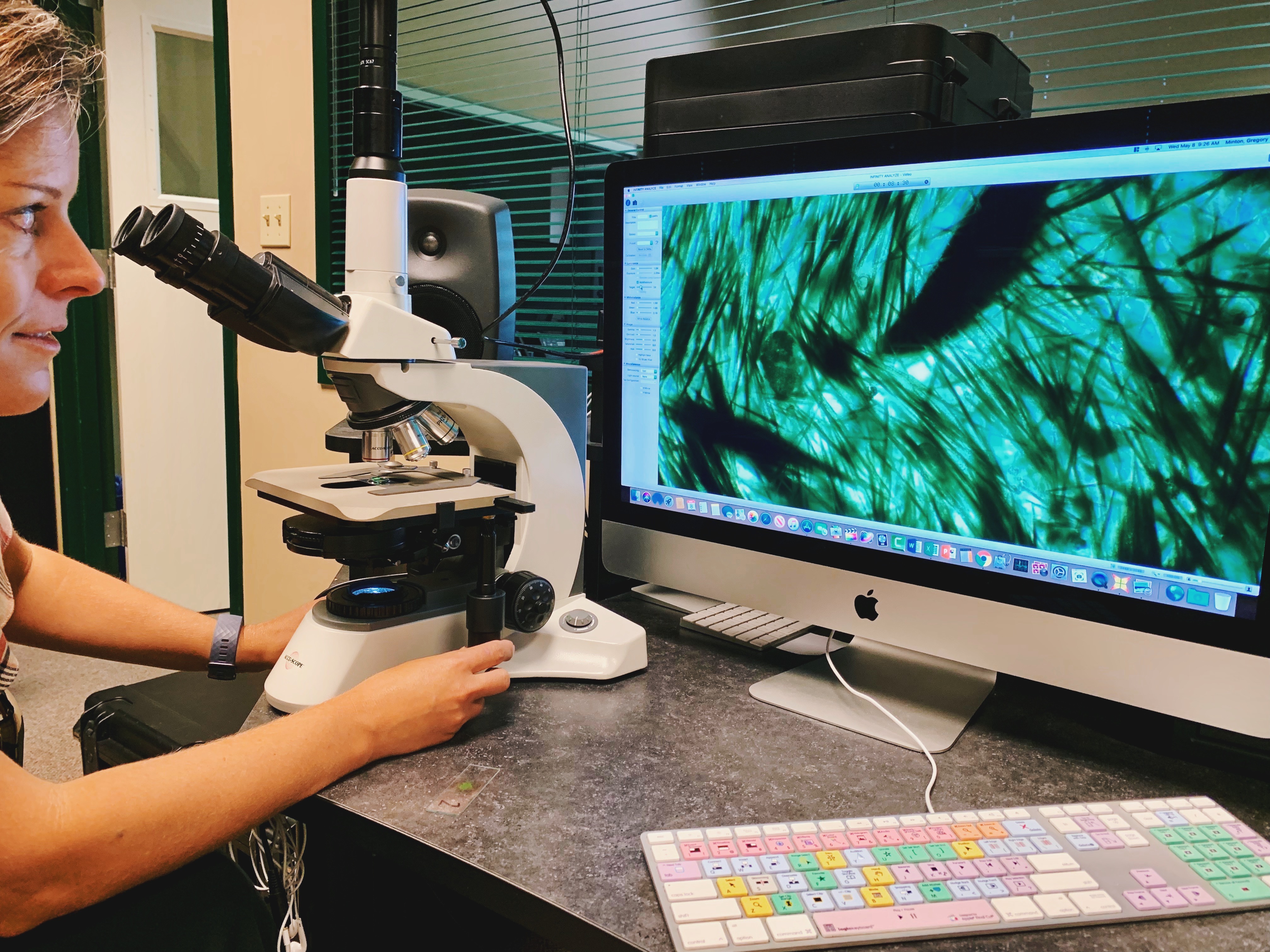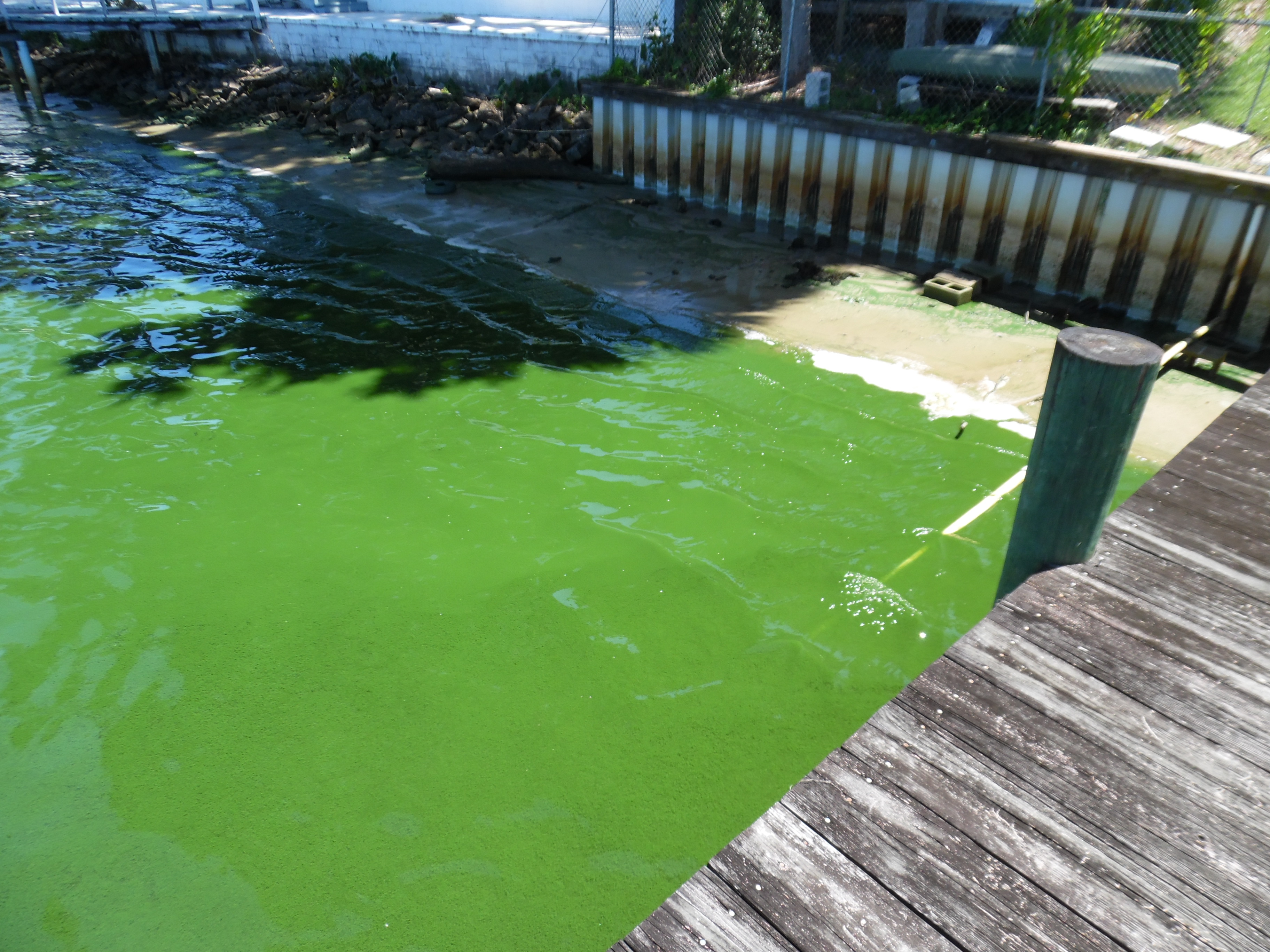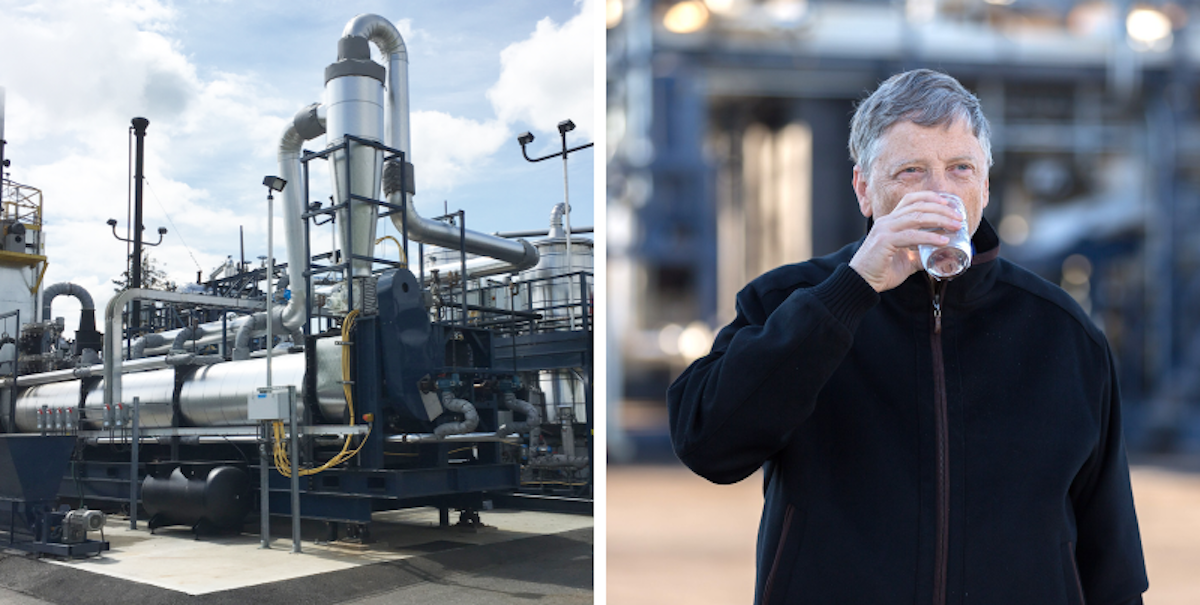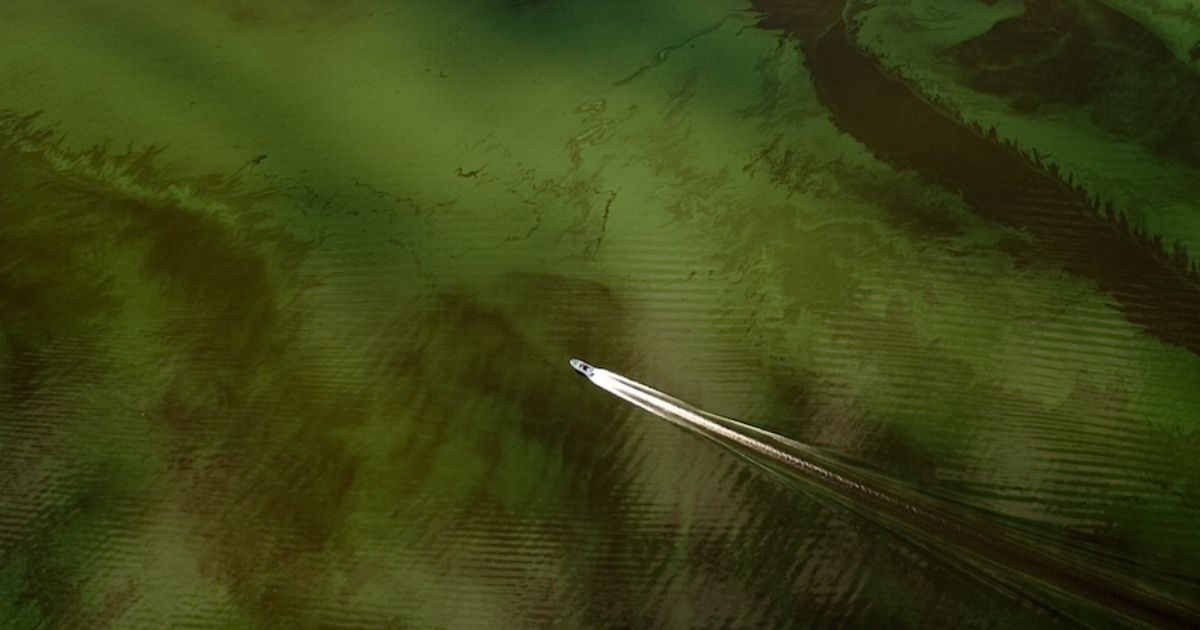In 2017 the American Geophysical Union estimated that 54 percent of the human total phosphorus (TP) flowing into the worlds surface waters comes from domestic human waste, with agriculture contributing 38 percent.[1]
There is no debate among the scientific community nationwide that the frequency of harmful algal blooms (HAB) is increasing as the concentration of total nitrogen (TN) and total phosphorus (TP) in surface waters continue to increase.

What is the problem?
When we pull the handle to flush, we never give much thought to where it goes, how it is processed, or where it is disposed. Nutrients from domestic human waste sent to central sewer systems are converted to biosolids. Domestic human waste septic systems work well, but eventually fail. Our current response is to convert septic systems to central sewer, adding to the volume of biosolids that must be disposed. Nutrients also find their way into surface waters through older failing central sewer conveyance infrastructure that should eventually be replaced.
Biosolids are disposed on agricultural lands and exposed to rainfall events, which wash a portion of the nutrients from the land into surface waters, increasing the nutrient content and directly contributing to chronic HAB events. Cultivating crops without biosolids does require supplemental fertilizer, some of which finds its way into surface waters.

What are the costs?
Fixing Florida’s failing sewer infrastructure, is estimated to be in the hundreds of billions of dollars.[2] This is generally funded through repair and replacement allocations of wastewater utility assessments.
The State of Florida creates over 310,000 dry tons of Class AA and Class B biosolids from central sewer wastewater treatment facilities that are land applied annually. Biosolids are estimated to contain 5.5 percent TN and 2.2 percent TP.[3] A conservative nutrient runoff estimate of 12 percent[4] would result in at least 4.1 M lbs. of TN and 1.6 M lbs. of TP being discharged to surface waters from biosolid waste annually.
The cost of removing nutrients from surface waters using rural constructed stormwater treatment areas is approximately $26 per lb. for TN and $130 per lb. for TP.[5] If land application costs of biosolids average $50 - $125 per dry ton,[6] then the land application cost of $15.5 M - $38.8M is creating a $314.6 M annual burden to the State for nutrient TN and TP surface water clean-up. Additionally, TP accumulates in soils, increasing legacy phosphorus annually.
All agricultural crops can be grown profitably without the use of biosolids as a nutrient source. Land disposal of biosolids is not efficient nutrient management. It is simply convenient human waste disposal.
The State is looking to the agricultural industry to reduce this nutrient burden created by biosolid disposal through the Florida Department of Environmental Protection (FDEP) establishing Total Maximum Daily Load (TMDL) reduction goals. These TMDLs are impossible for the agricultural industry to achieve while at the same time allowing the land disposal of urban-created, nonessential biosolid nutrients.
The State’s default position to remedy this unachievable goal is to allow agriculture to claim “presumption of compliance” simply by enrollment into the Florida Department of Agriculture and Consumer Services (FDACS) BMP Program. This is permitted while many agricultural canals exhibit mean TN and TP concentrations 3 to 5 times state adopted numeric nutrient criteria (NNC).[7]
Additionally, in 2018 the Inspector General of the United States Environmental Protection Agency was unsure of the safety of the:
“…352 pollutants found in biosolids, including 61 designated as acutely hazardous, hazardous or priority pollutants in other programs.”[8]
Florida’s current population is approximately 21.3 million people. According to the Florida Department of Health 70 percent of the population of Florida is on central sewer. Thirty percent of the population or 6.4 million people are utilizing septic systems. Based on 2.5 persons per household there are about 2.6 million septic tanks in Florida.
The conversion of failing septic systems to central sewer could range from $15,000 to $20,000 a home for a utility to lay municipal sewer lines and then repave the roads, or about $2 million for every 100 homes. There is also about a $6,000 cost per home to connect to sewer.[9]
Estimating a 10 to 20 percent septic system failure rate of 30 percent of the population on 2.6 M septic systems results in $5 to $10 billion in costs for converting only 3 percent to 6 percent of the population to central sewer.
 Example of alternative technology: Bill Gates drinks water from Sedron Technologies Omni Processor, developed with funding from the Gates Foundation. Outputs include electricity, 20% ammonia, distilled water and a phosphorus rich ash soil or construction supplement. Source: Sedron Technologies.
Example of alternative technology: Bill Gates drinks water from Sedron Technologies Omni Processor, developed with funding from the Gates Foundation. Outputs include electricity, 20% ammonia, distilled water and a phosphorus rich ash soil or construction supplement. Source: Sedron Technologies.
Are there new technologies?
Alternative technologies to the land application of biosolids, including advanced gasification, pyrolysis, varcor processing, omni processing, supercritical water oxidation, and other nutrient resource recovery, are available today and afford better alternatives for nutrient management. They disintegrate all hazardous material and segregate the TN from TP so each nutrient can be applied more efficiently to the crop, resulting in considerably less discharge to surface waters.
These technologies offer low-cost soil amendments for agricultural lands and promote resource recovery producing profitable end products such as electricity, natural gas, ammonia, ethyl-3-ethoxybutyrate (a biofuel additive) and phosphorus ash which could transport TP out of the state to soils void of the nutrient.
One alternative proposal, if applied statewide, suggests that all of the annually produced biosolids in Florida could be processed and converted to renewable products for an estimated capital cost of $500 M to $600 M and annual operating cost of $60M with a return on investment and profit achieved within 8 years.[10]
Is this ballpark estimate accurate? No one knows. We keep reanalyzing the problem to the same conclusion year after year. This type of technology might also qualify for supplemental funding from the Federal Section 319 Nonpoint Source Pollution Program.
Implementing meaningful solutions
A Regional Biosolids Symposium held in 2018[10] resulted with the adoption of resolutions from 9 of the 10 Florida Regional Planning Councils and the Florida Association of Counties, which also adopted the reduction of the land disposal of biosolids as a guiding principle.
The resolutions have a simple message: the State of Florida and its local governments should prioritize the reduction and eventual elimination of the land application of human wastewater biosolids; and the State of Florida should establish a pilot projects program for funding local utilities to implement new state-of-the-art wastewater treatment technologies to improve nutrient recovery and afford more efficient use of human wastewater biosolids resources.
The 2020 Florida Legislature passed Senate Bill 712 which states:
“The Legislature finds that it is in the best interest of this State to regulate biosolids management in order to minimize the migration of nutrients that impair water bodies.”
“The bill requires enrollment in FDACS’s BMP program and prohibits the application of Class A or Class B biosolids within 6 inches of the seasonal highwater table, unless a nutrient management plan (NMP) and water quality monitoring plan provide reasonable assurances that the application will not cause or contribute to water quality violations.”
Separating biosolids 6 inches from the highwater table does not provide much protection and the (NMP) caveat could allow for less than 6 inches of separation.
The Bill also established a pilot grant program for advanced wastewater treatment (AWT) projects. AWT is broadly defined and may or may not include reduction in the land disposal of biosolids, and the legislature has not allocated any specific funding to reduce the land disposal of biosolids.
Unfortunately, the 2020 legislation will do nothing to reduce nutrients discharged to surface waters. As the population of Florida increases, land deposition of biosolids just pushes an increasing amount of nutrients around in the same box, increasing chronic HAB events.
Three options are available for reduction of the 92 percent impact from agricultural and human domestic nutrients on our waterways. First, continue to improve the efficacy and efficiency of fertilizer BMPs which will also increase agriculture’s bottom-line for profits at zero cost to agriculture. Second, continue to repair and replace failing septic and central sewer infrastructure funded through utility use assessments.
Third, most importantly, local municipalities and State legislatures working through FDEP, FDACS need to prioritize and allocate supplemental funding and solicit requests of proposals specifically for alternatives to reduce or eliminate this archaic, non-essential nutrient and potentially hazardous biosolid waste disposal practice. This one effort would export phosphorus out of the state, reduce nutrients to surface waters, decrease HAB events, eliminate land applied hazardous materials, help agriculture meet adopted TMDL nutrient goals and still provide agriculture with a low-cost efficient source of nitrogen.
It’s past time to stop the finger pointing and passing the buck. Cost neutral and profitable alternatives exist. The responsibility and leadership to solve this problem rests at the feet of our local and State elected officials.
For more on this topic, read Toxic Algae: How Poor Wastewater Management and Bad Agricultural Practices Slimed Florida and What is Fueling Harmful Algal Blooms in the United States?
Article References:
- Mesfin M. Mekonnen, Arjen Y. Hoekstra, Global Anthropogenic Phosphorus Loads to Freshwater and Associated Grey Water Footprints and Water Pollution Levels: A High-Resolution Global Study: GLOBAL ANTHROPOGENIC PHOSPHORUS LOADS, 2017, DOI:10.1002/2017wr020448
- Josh Salman, Jennifer Borresen, Daphne Chen, Dak Le, Aging Infrastructure and Storms Contribute to Massive Spills, Gatehouse Media, USA Today Network News, 2019
- Florida Audubon, Disposal of Sewage Sludge in the Lake Okeechobee Watershed Is Hurting Everglades Restoration, June 2009.
- South Florida Water Management District, Nutrient Budget Analysis for the Lake Okeechobee Watershed, Final Comprehensive Report, September 2010
- Mary Oakley, University of Florida Center for Landscape Conservation Planning, Prepared for the South Florida Water Management District, Interim Report for the Water Farming Demonstration Project Options Assessment and Opportunities Identification: For Nutrient Load Reduction and Surface Water Storage in the St. Lucie River Watershed, August 2016
- Maria Silveira, University of Florida, Utilization of Biosolids for Pasture Utilization, (Obreza 2006 personal communication) UF – IFAS, 2008
- HDR, Inc., St. Lucie and Indian River Counties, Water Resources Study, Final Summary Report, November 2009, Prepared for: South Florida Water Management District and St. Johns River Water Management District
- US Environmental Protection Agency, Office of the Inspector General, At a Glance, EPA Unable to Assess the Impact of Hundreds of Unregulated Pollutants in Land-Applied Biosolids on Human Health and the Environment, November 2018
- Lowery, Terry Senior Vice President JonesEdmunds, Getting from Septic to Sewer A Guidance Tool, Florida League of Cities Webinar, March 14, 2018.
- Treasure Coast Regional Planning Council, Regional Biosolids Symposium, Indian River State College, Wolf High-Technology Center, June 8, 2018.
By Gary N. Roderick, Environmental Consultant and Former Environmental Administrator, S.E. District Florida Department of Environmental Protection (FDEP), and Michael J. Busha, Former Executive Director, Treasure Coast Regional Planning Council (TCRPC)





